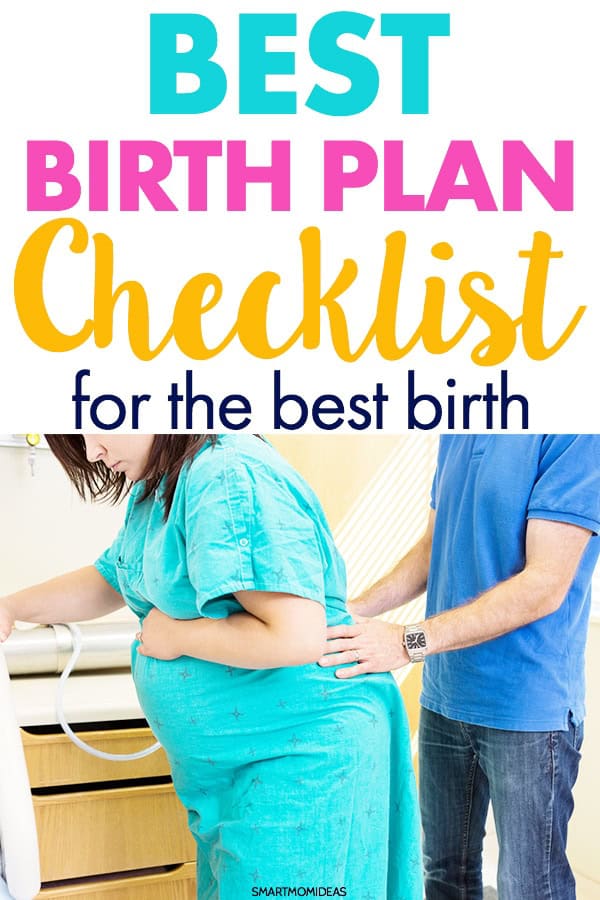The best birth plan you need to have a smooth child birth!

The big day is almost here mama!
Excited for the birth of your newborn baby girl or boy? While my birth was a scheduled c-section I was excited to welcome my twins into this world!
While some mothers go with the flow when it comes to child birth, others wish to be more involved in what happens during the process.
Even though childbirth is guaranteed never to go exactly as planned, women still have choices when it comes to where they give birth and how they give birth.
Perhaps you’re not the kind of woman who needs every detail of the upcoming birth of her child accounted for, but having a plan not only gives you some control of the experience but enlightens you to the kinds of choices you can make when it comes to your childbirth experience.
What is a Birth Plan?
A birth plan is a document that helps to ensure that the health care professionals caring for you during and after the birth of your baby know what your wishes are.
It outlines your preferences when it comes to things like who is going to be in the room with you, what kind of pain management you want to have and who is going to cut the umbilical cord after the baby is born.
Having a birth plan structures the conversation about important issues with your healthcare provider.
A birth plan is useful not only in making sure the doctors and nurses on the same page as you, but it also helps you to explore exactly what your options are. You may not be aware of the choices you have when it comes to labor, delivery and after the birth of your child.
Postpartum Course

What Happens When a Birth Plan Doesn’t Go as Expected?
It is very important to discuss and review your birth plan with your doctor or OB-GYN before the birth of your child. If you are a high-risk pregnancy, or have had a high-risk pregnancy in the past, they may make recommendations contrary to your plan.
The ultimate goal of your healthcare providers is for both mom and baby to be healthy. There may be uncontrollable circumstances that mean following your birth plan may put you or your baby at risk.
Keep an open mind and prepare to be flexible when it comes to executing your birth plan. If anything, prioritize the things on your checklist that are absolutely important to you. That way, if your doctor needs to make a decision against your plan, they can try to accomodate the things that mean the most to you.
Your Birth Plan Checklist
Names and Contact Information
Include your name and contact information as well as the name and phone number of your doctor. You should also specify where you wish the birth the occur – hospital, home, birthing center, etc.
This is also where you can indicate who you want present with you during labor and delivery.
Medical Issues
To make sure everyone is on the same page, you may want to include any health issues you have that may affect the birth of your baby.
These include gestational diabetes, group strep B or a RH incompatibility with the baby. Any of these issues will be noted on your medical file, but if you plan on giving birth at home or at a birthing center, they may not have this information.
Environment and Comfort
Whether you plan on delivering your baby in a hospital, at home or at a birthing center, you can make choices as to what your environment is like.
You can specify if you want low lighting, soft music or as much silence as possible.
If you are not interested in having student doctors or nurses present during the labor and delivery, specify this in your birth plan. You may also want to indicate that you want as few interruptions as possible.
It is here that you should also write down whether or not you want your partner, or whoever you choose to be present, to take any pictures or videos.
Labor
While you are experiencing labor and contractions, you aren’t necessarily confined to your bed (unless suggested by your doctor). In your birth plan, you should list whether you want to lay, walk around or stand up during your labor.
You can also request or bring along some helpful laboring tools such as a birthing ball, a birthing chair or a birthing stool.
Depending on whether or not it is available to you during labor, you may choose to stand in a shower or sit in a bath.
Pain Management
Most women believe that their only choices for pain management is an epidural or bust. However, there are other options and, depending on your situation, you may want to specify these in your birth plan.
There are non-medical options such as breathing techniques and massage that may help if you are interested in attempting a natural birth. Talk to your doctor beforehand about what kinds of pain management is available to you.
Delivery
When it comes to push time, your healthcare providers have one goal in mind: get the baby out safely and in a timely manner. Unless there are complications, however, you still have some choices when it comes to the delivery of your baby.
You can indicate to your doctor that you do not want an episiotomy unless absolutely necessary. An episiotomy is an incision made in the perineum (the tissue between the vaginal opening and the anus) that allows more space for your baby to come out. Without one, this tissue may tear naturally.
Consider requesting leg support during the pushing. You can have your partner or a family member hold your legs or some hospitals can provide a bar for you to rest your feet on. If you are birthing vaginally, this can help increase the strength of your push.
Also, when it comes to delivery, you may not even wish to deliver laying down. Barring any complications, you can attempt delivery while squatting.
Some medical staff may offer you a mirror to see your baby’s head crowning and you can definitely include this in your birth plan if you are interested in viewing what is happening down there.
You may also want to note on your birth plan who should be present with you in case a cesarean section is necessary.
After Delivery
The first order of business once your baby is delivered is having the umbilical cord cut. Who does this is completely up to you and you can include this in your birth plan (please ask the lucky candidate whether or not they are comfortable doing it first!). Otherwise, the doctor can perform this procedure.
Typically, after the cord is cut, the baby is cleaned and weighed. Let the staff know whether or not you want to hold your baby immediately and then have him or her cleaned and weighed. Otherwise, you can wait until they are done.
Care of Baby
Most nurses nowadays greatly encourage breastfeeding immediately after birth and for at least the first year of the baby’s life. Whether you choose to do this, or formula feed, you should indicate so in your birth plan.
If you are against your little one having a pacifier, note this too. Some hospitals may automatically administer them as a way to soothe your baby.
The Best Childbirth Experience
As long as there are no complications, you can exert control over your childbirth experience. Don’t be afraid to put together a birth plan and discuss it with your healthcare provider.
Just be prepared for changes to your plan. No birth is predictable and the doctors may have to make decisions in the best interest of you and your baby.





Leave a Reply